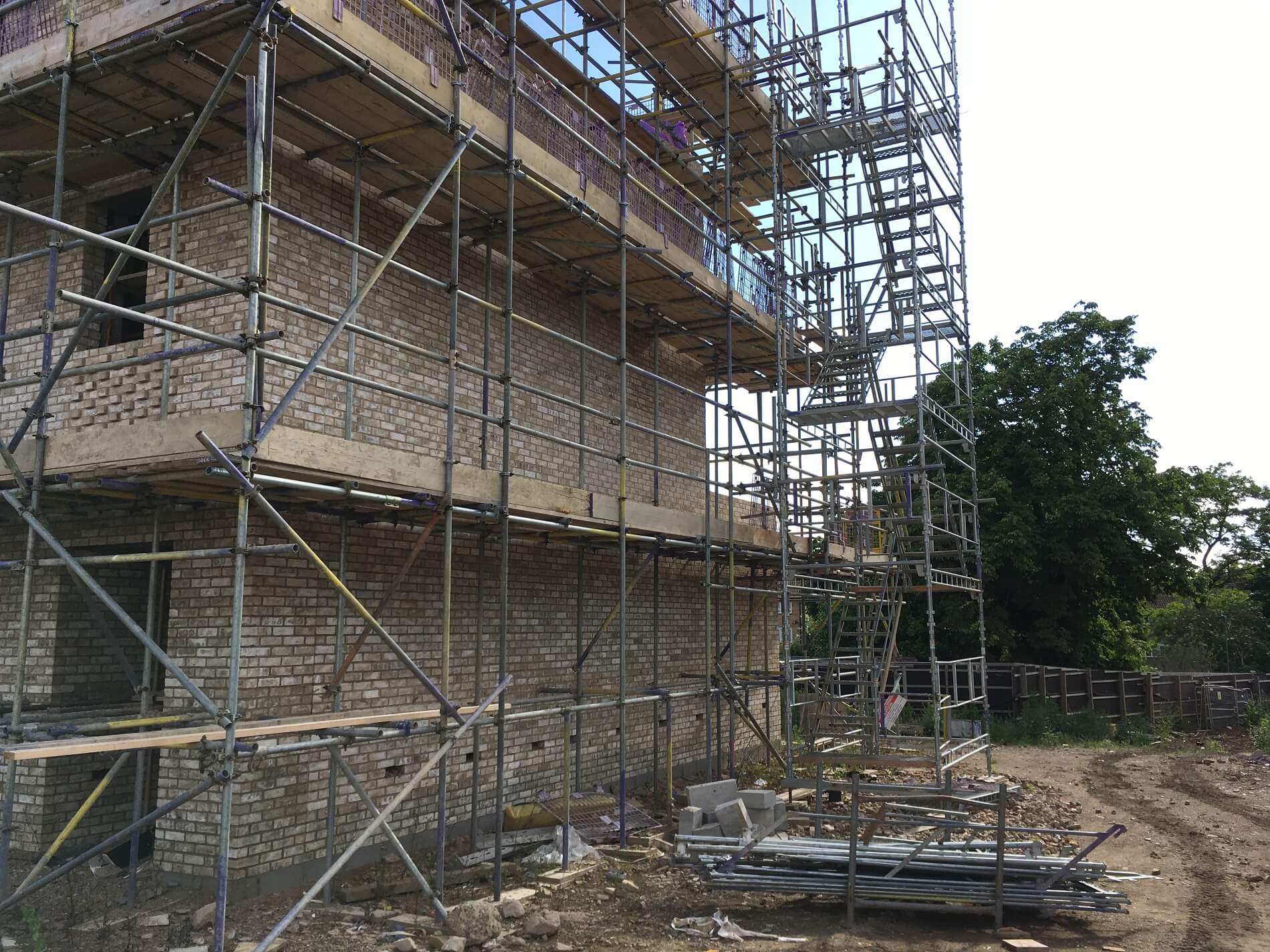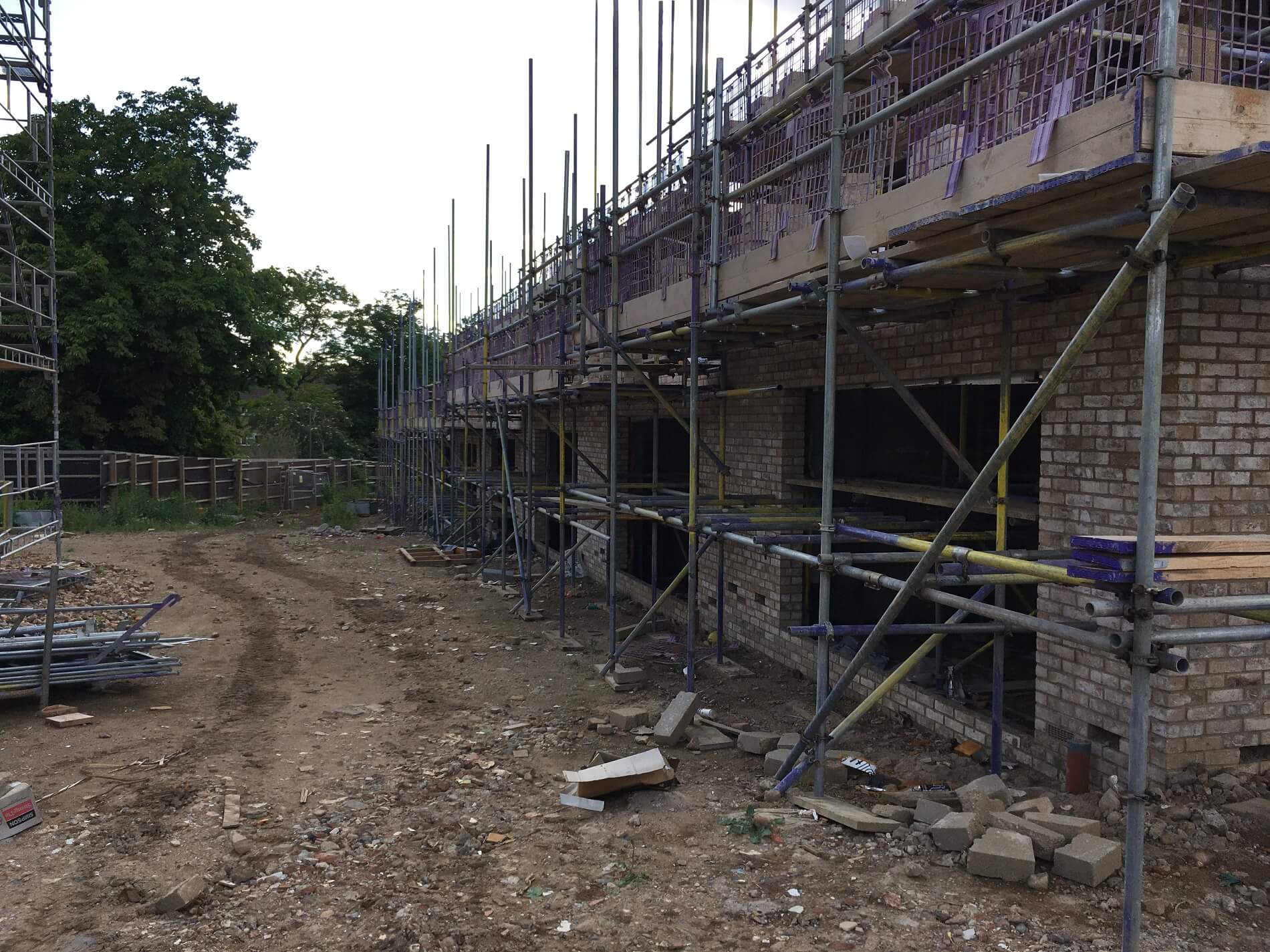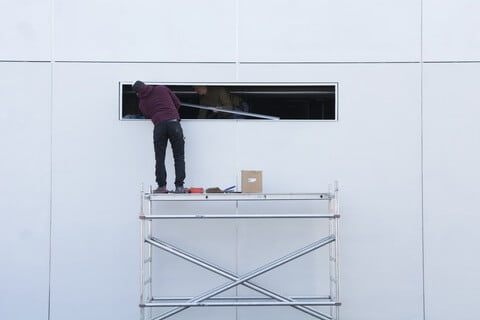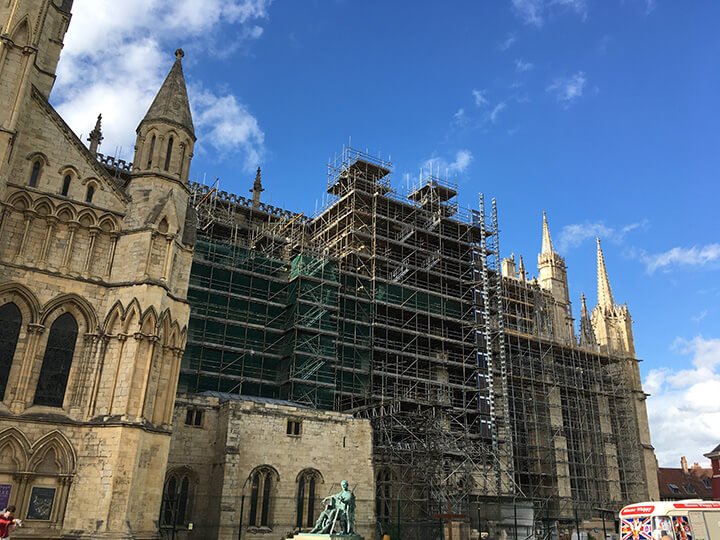How do you know which types of scaffolding you need from so many that are available? Or what is the difference between each type? In this list, you can find all the available scaffolding types. On top of that, you can discover more in detail about each type and its use in construction.
Remember a scaffolding is a temperature structure also known as staging area that support workers to gain a higher reach. Typically to allow builders to get the job done.

Types of scaffolding
- Cantilever
- Tube and clamp
- Patented
- Single
- Double
- Suspended
- Trestle
- Steel
- Mast climbing
- Hanging scaffold
1. Cantilever
With this type, the scaffolding system is supported by several needles thus it’s also called a needle scaffold. The two forms of cantilever scaffolding are single form scaffolding and double form scaffolding. The difference between the two is that for the single-form scaffolding, the standards are supported by a chain of needles on the walls, whereas, for the double form, the needles are strutted through openings in the floor.
2. Tube and clamp

Tube and clamp are also commonly known as tube and fitting scaffolding or simply Tubular. This is one of the oldest types of scaffolding. Consisting of tubes and clips, the ease to assemble and disassemble is one of the reasons this type of scaffolding is common. Apart from providing a stable working platform, they’re also suitable for any irregular buildings since they can be made into any odd shape.
3. Patented scaffolding
These are ready-made scaffolding made from steel. The patented scaffolding is ready for usage upon purchase. The working platform which is arranged on brackets can be adjusted to a suitable height. They’re also easy to assemble and disassemble and are best suited for repairs or short-term projects.
4. Single scaffolding

Commonly used for brick masonry, the single scaffolding is also known as bricklayers scaffolding. It’s set parallel to a wall and consists of ledgers, standards, guards, putlogs, etc placed to provide a stable working platform.
5. Double scaffolding

Also known as mason’s scaffolding/independent scaffolding, the double scaffolding is best suited for stone masonry projects where it’s challenging to make holes on the walls or you don’t want to interfere with the existing structure. Two rows of scaffolding are put up next to the building to provide adequate support to the putlogs creating a stable working platform.
6. Suspended scaffolding
Commonly used for repair works, the suspended scaffolding involves supporting the working surface from the roof using chains, ropes, etc. It’s especially suitable if the structure is tall since the platform can be raised or lowered to the required height.
7. Trestle

The best suited for indoor repair works where the height is under 5m is Trestle scaffolding. The working platform is supported on movable tripods or ladders where the height can be adjusted accordingly.
8. Steel scaffolding

With steel scaffolding, everything steel is used from the members, tubes to couplets. It’s the most preferred option for most high-rise structures because of its strength and durability.
9. Mast climbing

Best suited for the construction of a high-rise building, the mast climbing scaffolding is especially useful if there’s any heavy load to be carried. Apart from the ease, it gives to access different heights for multi-storey structures, mast climbers are also ideal if there’s limited ground area since the base structure doesn’t require much space. Once the mast structure is fixed to the ground, the scaffold can move up and down, making it somewhat similar to the suspended scaffolding.
10. Hanging scaffold
The hanging scaffold is also known as hanger scaffold. It’s best suited for projects where a scaffolding structure can’t be erected from the ground up. The hanger scaffold can’t be adjusted because of its unique design and purpose. They’re especially a great solution where other types of scaffolding aren’t viable.